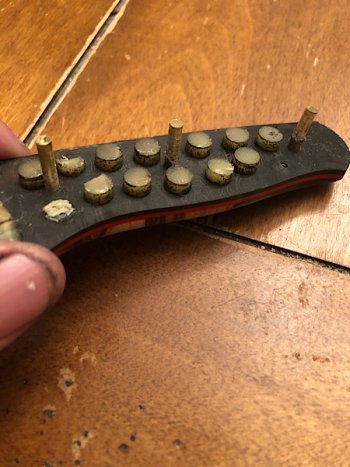EdCaffreyMS
"The Montana Bladesmith"
I see images all over the internet of full tang knives being constructed with a bazillion holes drilled in the tangs. I have never been able to wrap my head around the logic of it. I dear friend recently posted a pic, and I stole it to illustrate my point. (Because I only drill TWO, usually 7/16" or 1/2" holes in a full tang, and those holes are always drilled in a place that leaves the largest "web"/support material possible.)
When a bunch of holes are drilled in a full tang, I can only assume that people think the are "lightening" the knife/tang, but they take no consideration in how much they are weaken the tang. In the instance of this photo, look closely at the break.... and think about just how little material was left to support the tang after the holes were drilled. Then think about how that particular area of a knife is exactly where it usually incurs the most stress..... bad juju!

When a bunch of holes are drilled in a full tang, I can only assume that people think the are "lightening" the knife/tang, but they take no consideration in how much they are weaken the tang. In the instance of this photo, look closely at the break.... and think about just how little material was left to support the tang after the holes were drilled. Then think about how that particular area of a knife is exactly where it usually incurs the most stress..... bad juju!


